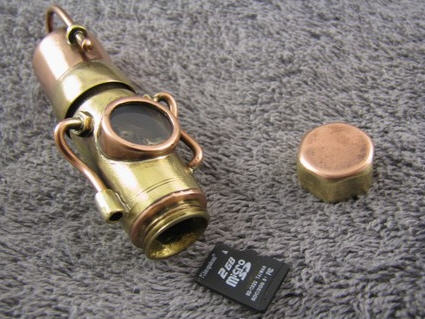Nexcopy Announces New microSD Card Duplicator
Today Nexcopy announced an all-new microSD card duplicator product line. Earlier SD duplicators required adapter cards for microSD media, which slowed down workflow. The new system eliminates adapters entirely, cutting unnecessary steps and boosting throughput. Nexcopy estimates production increases of up to 30% simply because users no longer have to seat microSD cards into adapters first.

Every microSD Card Duplicator ships with Nexcopy’s Drive Manager software suite, known for its broad set of copy and management functions.
Copy Functions Built In
- File Copy
- Copy Add
- IMG Copy
- Unique Data Streaming
- Device Copy (short)
- Device Copy (full)
How They Work
File Copy mode points to a source directory on the host PC and mirrors its content to all connected cards. Copy Add can append new files to cards already carrying data. IMG Copy mode duplicates from a binary image file (.img) to create exact replicas, while the included imaging utility lets operators build masters from physical cards. Unique Data Streaming adds flexibility: push static plus dynamic content to each target, useful in publishing or serialization workflows. Device Copy modes (short or full) provide either cluster-only duplication for efficiency or full binary duplication including boot code for maximum fidelity—even with proprietary file systems.
The duplicator line is available in 20, 40, and 60 target systems, starting at $1,299. All models are in stock and ship immediately.
UPDATE
Nexcopy has also released a USB 3.0-based microSD duplicator, the microSD160PC, with significantly faster copy speeds and the same Drive Manager software functionality.
UPDATE II
Drive Manager can now write CID values (Card Identification Numbers) directly into ROM on supported media. For applications requiring CID-based authentication or licensing, this is currently the only commercially available system capable of performing such operations at scale.
Background on microSD
The microSD card, introduced in 2005 by the SD Association, is a shrunken version of the standard SD card (11 × 15 × 1 mm). Initially only a few MBs to a few GBs, modern cards now scale into terabyte capacities. Performance has also risen sharply thanks to UHS-I, UHS-II, and UHS-III bus interfaces, enabling speeds necessary for 4K/8K video, gaming, and industrial workloads.
Adoption began with mobile phones but spread quickly to cameras, automotive systems, IoT devices, and embedded industrial computers. Security features such as built-in encryption, password locks, and secure erase have been added as use cases shifted toward sensitive data handling. Ongoing innovation continues to push higher density, faster speeds, and greater durability.
With Nexcopy’s new microSD duplicators, businesses now have a scalable, professional solution for loading content, securing it, and managing unique data across hundreds of cards at a time—all without adapter bottlenecks.
Source: Nexcopy News Room
 3 bit-per-cell NAND is sampled out the manufacturers. The 3 bit per cell is exactly that, 3 bits of information are stored in each NAND cell. This increased the capacity while keeping the foot print the same size. This ultimately leads to larger storage capacity at a cheaper price. Traditionally, SLC [Single Layer Cell] and MLC [Multi Layer Cell] technology is used is USB and SD flash, but we will begin to see TLC [Triple Layer Cell or 3 bit per cell] technology have a full roll-out by the end of this year.
Over the past 18 months the biggest problem with TLC is the stability of the memory and performance, but Intel and Micron feel they overcame those problems and ready for production. More with their press release:
Continue Reading
3 bit-per-cell NAND is sampled out the manufacturers. The 3 bit per cell is exactly that, 3 bits of information are stored in each NAND cell. This increased the capacity while keeping the foot print the same size. This ultimately leads to larger storage capacity at a cheaper price. Traditionally, SLC [Single Layer Cell] and MLC [Multi Layer Cell] technology is used is USB and SD flash, but we will begin to see TLC [Triple Layer Cell or 3 bit per cell] technology have a full roll-out by the end of this year.
Over the past 18 months the biggest problem with TLC is the stability of the memory and performance, but Intel and Micron feel they overcame those problems and ready for production. More with their press release:
Continue Reading

 Today I read a great article on the future of cell phones,
Today I read a great article on the future of cell phones,  IC design houses Genesys Logic and Alcor Micro are expected to see their revenues grow over 20% sequentially in the second quarter of 2010 buoyed by increasing shipments of USB 3.0 controller chips, according to industry sources.
Genesys indicated that it has started shipping, in small volume, its second-generation USB 3.0-SATA bridge controllers, with the third-generation of its kind to be available in the third quarter of 2010. Overall, USB 3.0 chips will contribute over 3% to its total revenues in the second half.
Meanwhile, industry sources indicated that Alcor Micro has landed orders for USB card reader controllers for LCD TV application from a major player in Korea, which will help drive up its USB controller shipments.
IC design houses Genesys Logic and Alcor Micro are expected to see their revenues grow over 20% sequentially in the second quarter of 2010 buoyed by increasing shipments of USB 3.0 controller chips, according to industry sources.
Genesys indicated that it has started shipping, in small volume, its second-generation USB 3.0-SATA bridge controllers, with the third-generation of its kind to be available in the third quarter of 2010. Overall, USB 3.0 chips will contribute over 3% to its total revenues in the second half.
Meanwhile, industry sources indicated that Alcor Micro has landed orders for USB card reader controllers for LCD TV application from a major player in Korea, which will help drive up its USB controller shipments.





 Lets start the clock ticking for when microSD media will take over the world for flash storage.
Lets start the clock ticking for when microSD media will take over the world for flash storage.